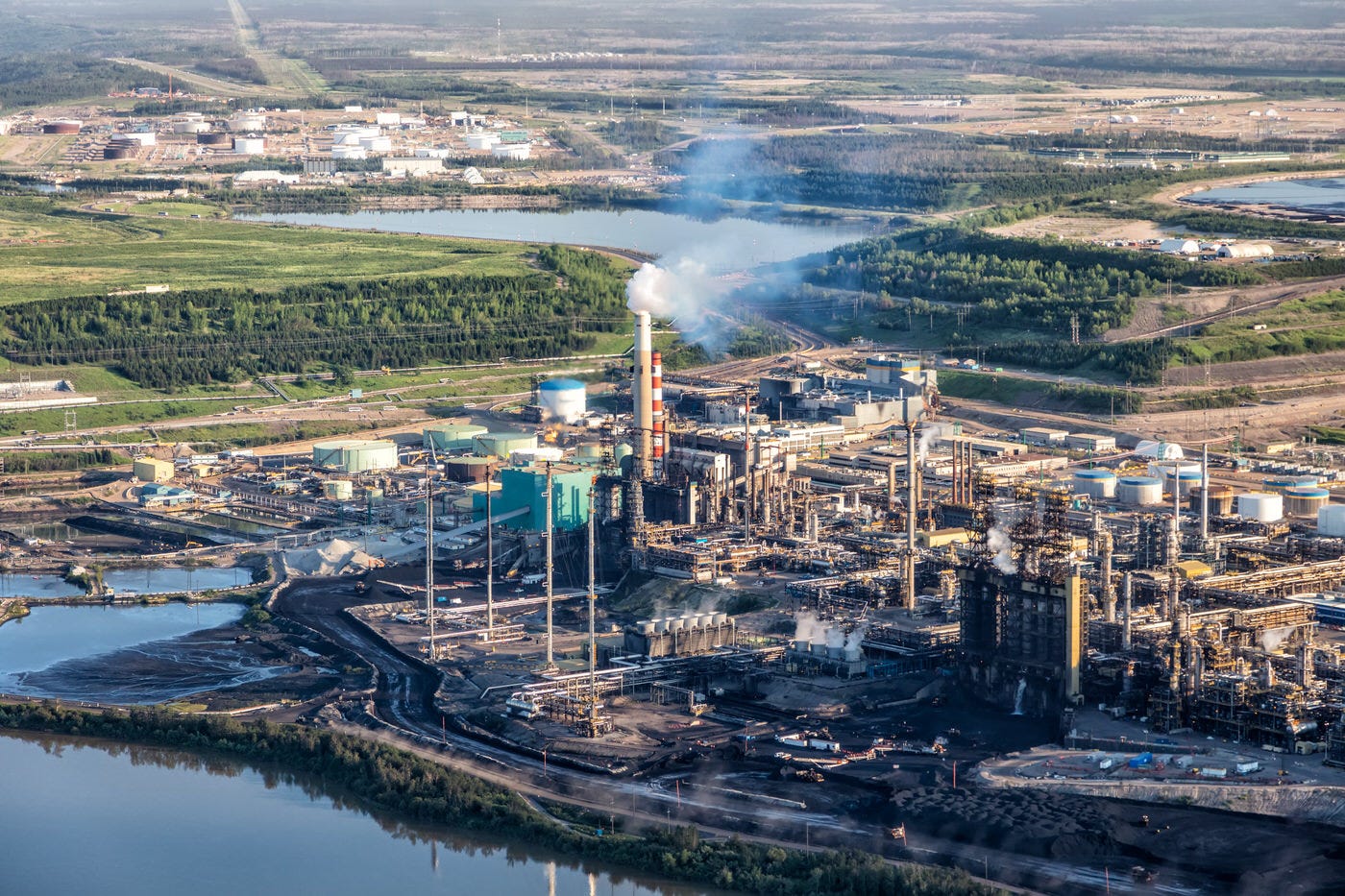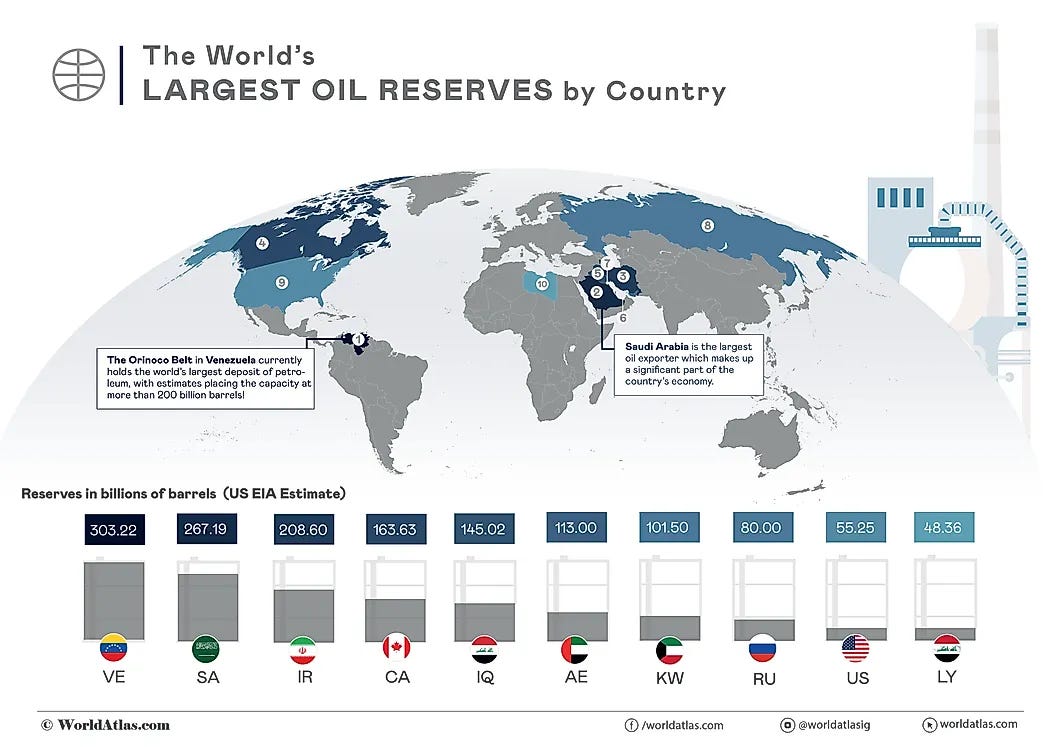OPEC, Shale’s Twilight, and Canada’s Underrated Power Play
“Energy security is national security.” — Dick Cheney
by Pierre Daillie, Managing Editor, AdvisorAnalyst.com
The world is awash in energy ignorance. The December 2024 conversation between Ninepoint Partners’ Eric Nuttall and Energy Aspects’ Amrita Sen pulls no punches in highlighting just how deeply detached market sentiment has become from energy reality.1 Oil demand is at all-time highs. Inventories are scraping historic lows. And yet, the prevailing narrative insists that oil prices are destined for perpetual stagnation—because, of course, the world’s newfound commitment to green energy has made crude obsolete overnight. If only that were true.
As Nuttall aptly put it, “We may be among the last remaining oil bulls in the world.” That sentiment isn’t born out of blind loyalty to hydrocarbons; it’s a function of hard math and observable facts. The crude market is trading on fiction, and the correction won’t be gentle when reality reasserts itself.
The Bearish Delusion: U.S. Shale’s Supposed Resurrection
If there’s a linchpin to oil market sentiment, it’s the misguided belief that U.S. shale will forever ride to the rescue. The numbers say otherwise. As Sen points out, U.S. shale is now growing at its slowest pace since the 2015-16 Saudi price war, and much of the industry is running out of Tier 1 acreage. “Producers themselves are acknowledging this,” she notes, highlighting how even oil majors like Chevron and ExxonMobil are pivoting from aggressive expansion to harvesting free cash flow.
“People have called the peak too early in the past,” Nuttall concedes, “but now even the producers themselves are saying it.”
For years, shale was the great equalizer—roaring into the market at a million barrels per day clip and upending OPEC’s grip. But geology and investor discipline have caught up to the once-indomitable U.S. energy engine.
“People have called the peak too early in the past,” Nuttall concedes, “but now even the producers themselves are saying it.” With shale flattening, the marginal barrel that once kept prices in check is fading. The implications are profound.
OPEC’s Grip Strengthens: Market Share Myths and Strategic Patience
For all the ink spilled about OPEC’s waning power, the cartel remains the ultimate arbiter of oil prices. The current market narrative paints OPEC as desperate—ceding market share to non-OPEC producers while burdened with spare capacity.
“They are perfectly fine ceding market share in the short term because they know they’ll get it back in the long term,” Sen explains.
It’s nonsense. Saudi Arabia, in particular, has been playing the long game, and its strategy is beginning to pay off.
“They are perfectly fine ceding market share in the short term because they know they’ll get it back in the long term,” Sen explains. That long-term thinking is what separates OPEC from the myopic shale industry. While shale spent years outspending cash flow and drilling itself into a corner, Saudi Aramco was securing 30-year supply agreements with refiners across Asia. When the market inevitably tightens, those contracts will dictate crude flows, not the whims of Wall Street.
Meanwhile, the supposed bogeyman of OPEC spare capacity is more illusion than reality. Market consensus pegs it at a staggering 8 million barrels per day. Sen scoffs at the number. “Our estimate is half of that,” she says. “And even then, we don’t know how much of that can be sustained.” A spare barrel that can’t be sustained isn’t really spare at all.
Trump, Iran, and the Unraveling of the Sanctions Shell Game
Among the most shocking revelations of the conversation has been the quiet complicity of the Biden administration in keeping oil prices artificially depressed. “The U.S. government has been explicitly telling Asian refiners to go ahead and buy Iranian barrels—we won’t enforce our own sanctions,” Nuttall observes. In other words, Washington has been selectively loosening supply constraints to curb domestic gasoline prices, all while maintaining the facade of a hardline stance on Tehran.
“Even under Trump’s last term, Iran only managed to export 400,000 barrels per day,” she notes. “Right now, they’re doing 1.8 million.” The math speaks for itself—if Trump follows through, oil markets are in for a supply shock.
That will end under the second Trump presidency. Sen estimates that a true ‘maximum pressure’ campaign could strip up to a million barrels per day from the market. “Even under Trump’s last term, Iran only managed to export 400,000 barrels per day,” she notes. “Right now, they’re doing 1.8 million.” The math speaks for itself—if Trump follows through, oil markets are in for a supply shock.
And then there’s Venezuela, another wild card. The Biden administration’s soft-touch approach has allowed Caracas to ramp up exports, but Sen warns that could change overnight. A Trump-aligned foreign policy is far more likely to choke off Venezuelan flows, further tightening supply.
Canada’s Moment: An Unrivaled Strategic Asset
At the heart of this shifting energy landscape lies an underappreciated truth—Canada is poised to become an energy superpower whether its own government likes it or not.
“Every time I’m in Asia, they’re desperate to get more Canadian crude,” Sen reveals.
With U.S. shale stagnating and global heavy oil supplies tightening, Canadian barrels are more strategically valuable than ever.
Asia wants them. “Every time I’m in Asia, they’re desperate to get more Canadian crude,” Sen reveals. The U.S. refining complex needs them, particularly with Mexico’s heavy crude production in steep decline. The economic case for growing Canadian output has never been stronger, but—as always—politics threatens to get in the way.
“Why grow production when Saudi OPEC is removing barrels for you?” Nuttall argues. “Maximize free cash flow, buy back your shares, and let the market come to you.”
The industry’s best bet? Ignore the government and keep returning cash to shareholders. “Why grow production when Saudi OPEC is removing barrels for you?” Nuttall argues. “Maximize free cash flow, buy back your shares, and let the market come to you.” That strategy has paid off handsomely so far, and there’s no reason to deviate from it.
The Price Equation: The Era of Cheap Oil Is Ending
Where does this leave oil prices? Sen pegs Brent crude at $81 for 2025, but even she acknowledges that the market is underpricing future tightness. Non-OPEC supply is set to peak in 2028, but the real story is the impending collision between declining supply growth and still-rising demand.
“Even if we assume the most aggressive EV uptake,” she says, “we are still barely below 100 million barrels per day by 2050.”
Contrary to the fantasy of peak demand, oil consumption continues to set record highs. The IEA, perpetually bearish on hydrocarbons, still projects demand at 93 million barrels per day in 2050—an almost laughably small decline from today’s levels. Sen’s own model has demand peaking at 109 million barrels per day in 2032, then plateauing. “Even if we assume the most aggressive EV uptake,” she says, “we are still barely below 100 million barrels per day by 2050.”
The real question, then, isn’t whether oil demand will fade—it’s where the supply will come from to meet it. And with investment still far below required levels, the only realistic solution is higher prices. The market may not realize it yet, but the age of cheap oil is ending. When the reckoning comes, it won’t be subtle.
Conclusion: A Market Detached from Reality
Oil bulls like Nuttall and Sen are rare these days. That alone should be reason for investors to take note. When market consensus leans overwhelmingly one way, the asymmetry of risk tilts in the other direction. The oil market’s stubborn refusal to price in future supply constraints won’t last forever. And when sentiment inevitably flips, it will be those who understood the fundamentals—not the noise—who stand to reap the rewards.
Ninepoint Partners. "OPEC, Oil Demand, and Canada’s Role: Expert Insights from Eric Nuttall & Amrita Sen." YouTube, 10 Dec. 2024, www.youtube.com/watch?v=XQwI1hrXyzc.





